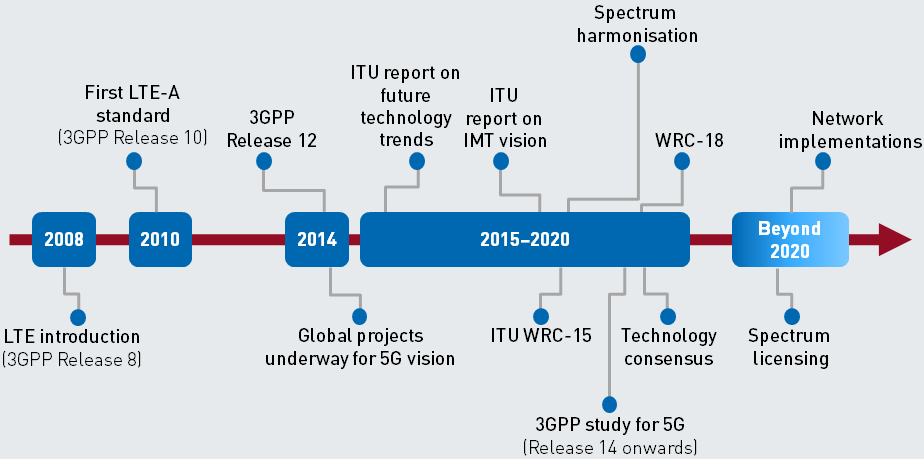
In a recent article, I wrote about the use of multiple frequency bands to achieve a careful combination of coverage and capacity, to achieve connectivity over large geographic areas, faster speeds, exponential and intelligent connectivity, ultra high bandwidth, etc, in 5G networks.
Besides the above promises, 5G networks also hope to achieve a low latency of less than or equal to 1ms; this is critical for applications like immersive entertainment, remote/robotic surgery, autonomous cars etc., where a delay could have damning consequences.
Latency here refers to delay, and is primarily governed by physical laws. Using the speed of light (3×108 m/s), light or electromagnetic (em) waves would travel over a distance of 300m in 1µs. this means for a content to be delivered in 1ms, the content should be located within a distance of 300km. Through careful research, GSMA estimates that the content should be 1km away from real communication networks, in order to achieve a latency of 1ms. In essence, a low latency gives the users the perception of infinite capacity.
Register for Tekedia Mini-MBA edition 18 (Sep 15 – Dec 6, 2025) today for early bird discounts. Do annual for access to Blucera.com.
Tekedia AI in Business Masterclass opens registrations.
Join Tekedia Capital Syndicate and co-invest in great global startups.
Register to become a better CEO or Director with Tekedia CEO & Director Program.

Interestingly, it seems this would be a partnership opportunity rather than a competition, contrary to industry speculations. This is because the cloud computing operators, no doubt own the cloud platforms, but are also actively looking for ways to deploy closer to the user by integrating into IoT devices, supporting private and hybrid cloud deployments etc., in order to diversify their offerings beyond public cloud offerings.
Telcos, on the other hand, have various physical locations, to their advantage, where the edge computing resources could be deployed. They also know that they would benefit greatly from partnering with cloud computing operators to provide a distributed computing environment within their markets. Furthermore, they could equally largely benefit from specific applications, mandated by local laws to store and host data locally. Besides, this would significantly reduce the required investment (and expertise) needed to benefit from this market, should telcos decide to venture on their own.

Though, it looks like both parties (telcos and cloud computing operators) would benefit from partnerships, rather than competition, telcos however need to have a clear long term strategy when formalising such partnership arrangements and constantly stay ahead of the trends within the industry. This is because the cloud computing operators are known to be very innovative in meeting new and future customer demands and have proven to be very agile and flexible in the delivery of their services. Telcos, on the other hand, are known for being generally slow to react to varying customer demands. Only time will tell how this would eventually play out.


